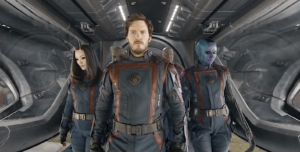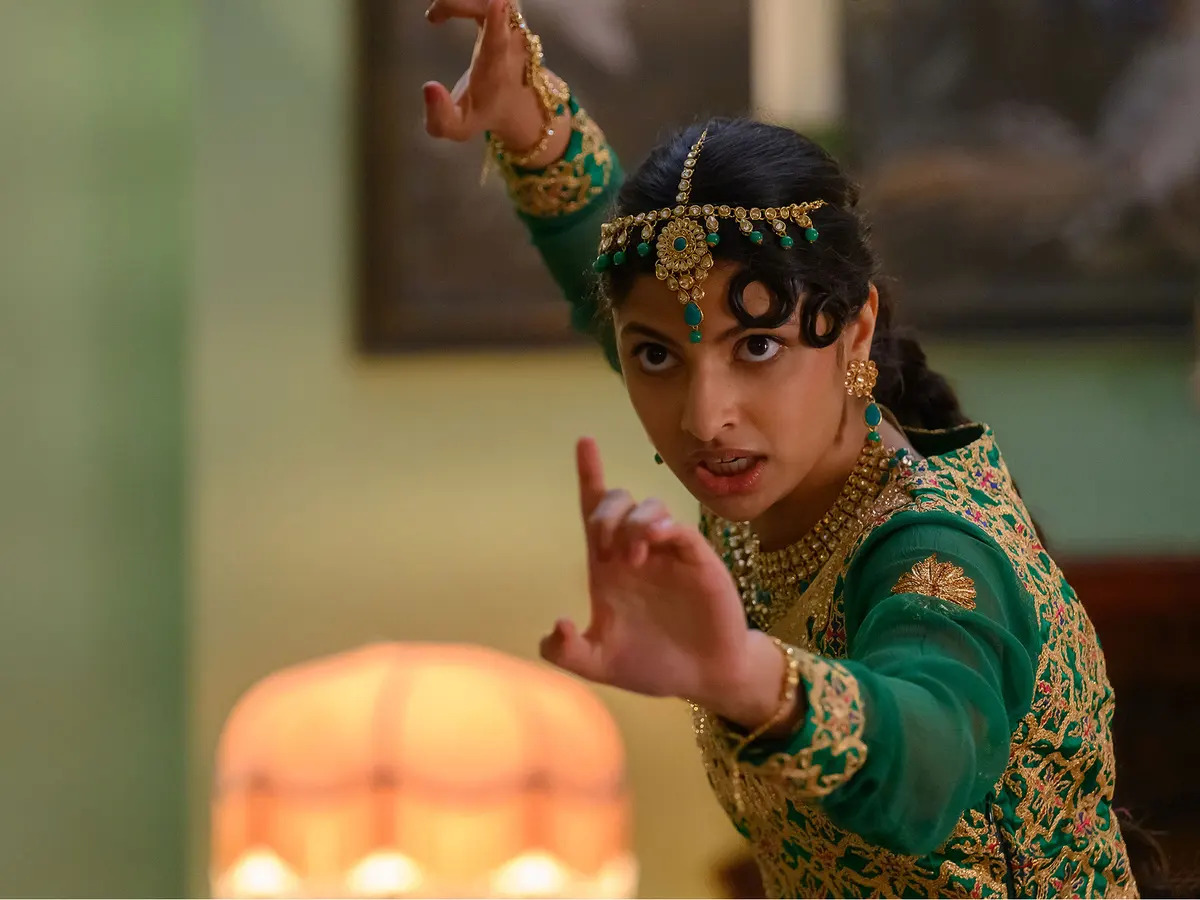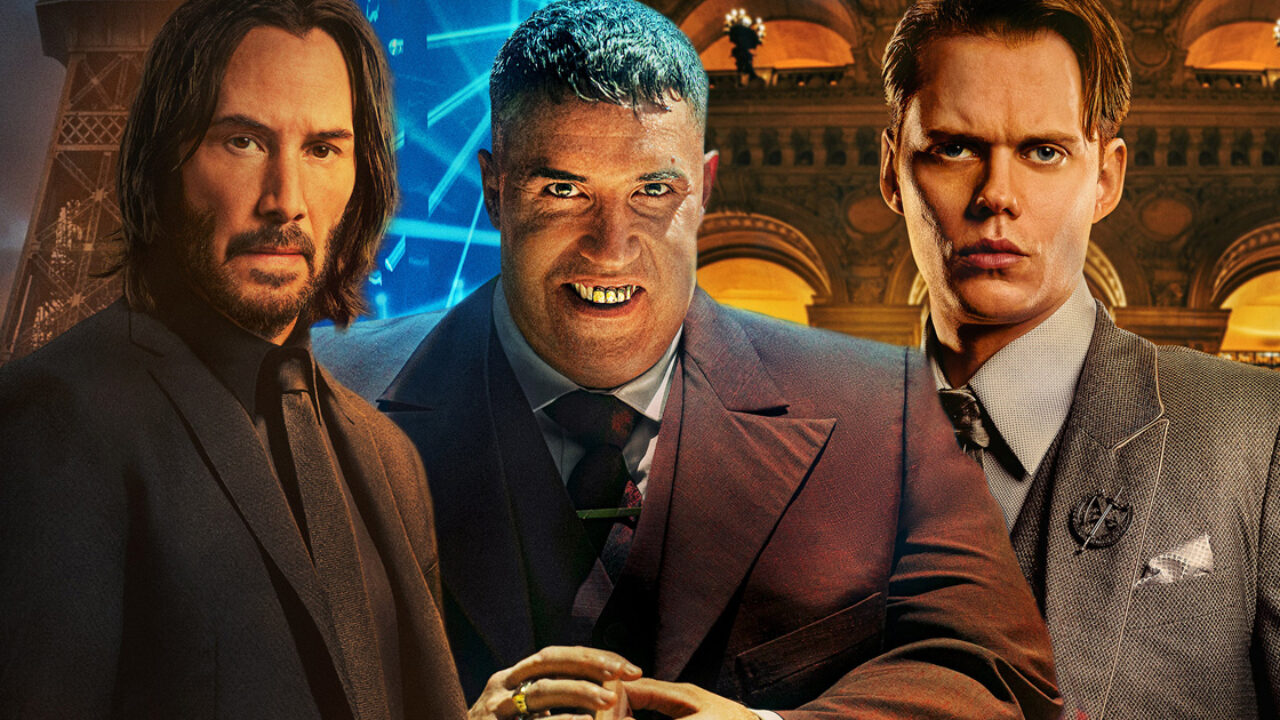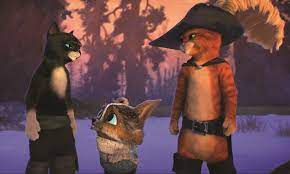Guardians of the Galaxy: Vol 3
Posted on May 3, 2023 at 11:56 am
B| Lowest Recommended Age: | Middle School |
| MPAA Rating: | Rated PG-13 for intense sequences of sci-fi violence and action, and for some language. |
| Profanity: | Strong language |
| Alcohol/ Drugs: | Alcohol, drunkenness |
| Violence/ Scariness: | Extended sci-fi/action/comic book-style peril and violence |
| Diversity Issues: | None |
| Date Released to Theaters: | May 5, 2023 |
| Date Released to DVD: | July 31, 2023 |

We already know something about the history of some of the characters. Peter Quill/Star Lord (Chris Pratt) had an earth mother and an alien father and was taken from earth at age 8 by an intergalactic group of rogues and thieves called The Ravagers. Gamora (Zoe Saldana) and Nebula (Karen Gillan) were stolen from their families when their planets were annihilated by Thanos and then tortured and mutilated to turn them into assassins. But we don’t know much about Rocket (Bradley Cooper) and the tree-guy voiced by Vin Diesel.
In this chapter, we go back to Rocket’s origin story. Like Thanos’ adopted daughters and Wolverine and I’m sure lots of other fictional characters, he was operated on by a megalomaniacal villain trying to “perfect” the world. He is The High Evolutionary, played by Chukwudi Iwuji. He has already created worlds and destroyed them for not living up to his exacting standards of perfection. One of his worlds we saw briefly in the last GothG movie, with Elizabeth Debicki as Ayesha, leader of a world of spectacularly beautiful golden-hued creatures. In this film, he threatens to destroy that world unless Ayesha’s son, Warlock (Will Poulter), brings him Rocket. While the High Evolutionary is obsessed with the “improvements” he inflicts, somehow Rocket has gifts of intellect that the High Evolutionary did not create for him and he wants to understand and either copy that or destroy it.
The High Evolutionary’s experiments on Rocket and other animals were mechanical, replacing body parts with metal, so that they look Like the mutilated toys in Syd’s room in the first “Toy Story.” But it is in the adjoining cages that he finds his first family, led by the warm-hearted otter named Lylla. Rocket, using that exceptional capacity for engineering we have observed in the earlier films, manages to escape (including piloting a ship even though he has never even seen one before, much less been exposed to outer space or really anything outside of his prison).
This time, then, the Guardians are not saving the galaxy. At the beginning of the film they seem happily settled in Knowwhere with Cosmo the Soviet wonder dog, Mantis, the anntena-ed empath (Pom Klementieff), and former Ravager Kraglin (Sean Gunn). They have opened a bar. But the one doing all the drinking is Peter, who is still trying to drown his grief over the loss of Gamora. Nothing can get him to stop until Rocket is attacked. He is gravely injured and in order to save him the Guardians will need to retrieve a code to unlock a mechanism that prevents the necessary surgery and just 48 hours to do it. The Ravagers also get involved, and they now include a different version of Gamora brought back from the past who has no memory of her relationship with Peter.
There’s a hint of “Mission Impossible.” They’re even told that if they are caught, they will not be acknowledged as acting on behalf of the ruling body. And there’s a Zune vintage music player retrieved at the end of Vol 2 to follow the mix-tapes from the first two movies with some new songs for the soundtrack.
As noted, it does get messy. The group of misfit toys go off in different directions and it is hard to keep track of who is doing what where. A increasing problem with the Marvel movies is the way they keep using the stakes The High Evolutionary and Warlock have powers of near god-like magnitude. What can the Guardians do? It gets muddled. The High Evolutionary can do just about anything including creating and destroying worlds, but somehow cannot fight back from an attack with claws. There is a significant element to the story about the essential value of living beings who might not be considered “higher” life forms….until that is undermined later on. I said it was messy. As Peter said in the first one, “Something good, something bad? Bit of both.”
NOTE: Stay through the credits for two extra scenes
Parents should know that this film has extended peril and comic book/action-style violence with sometimes graphic and disturbing images. Characters are injured and killed. The film includes strong language, drinking and drunkenness.
Family discussion: Why is having a name so important? What does the name High Evolutionary mean and what does he think it means to be “perfect?” Why was the distinction about “higher forms” significant?
If you like this, try: the other “Guardians” movies








